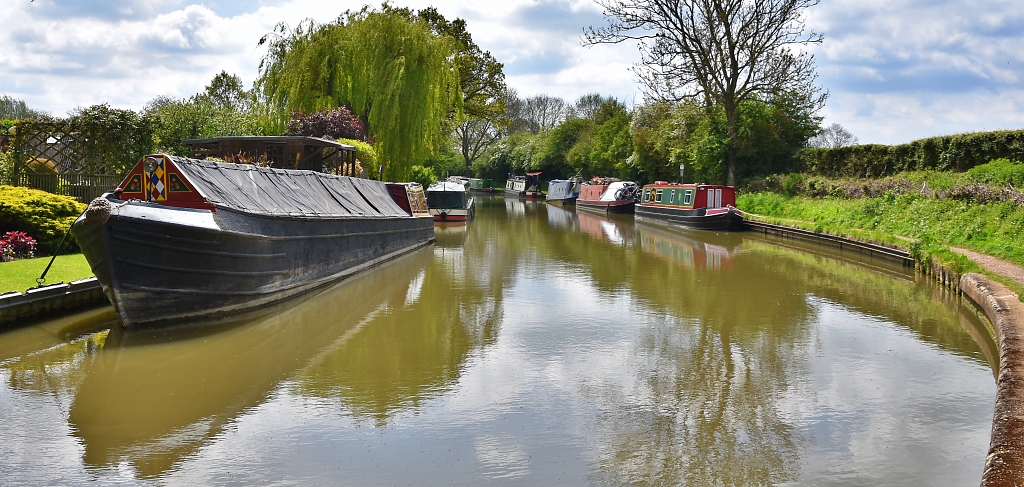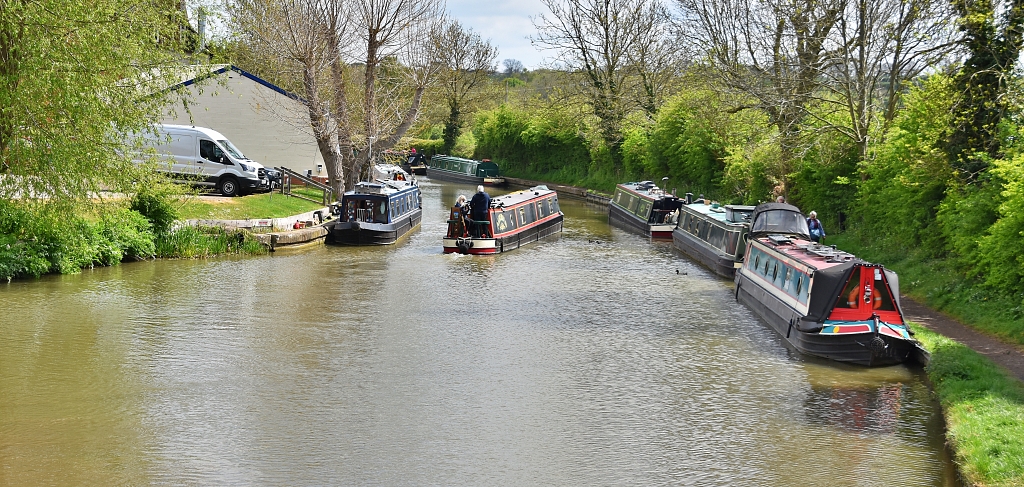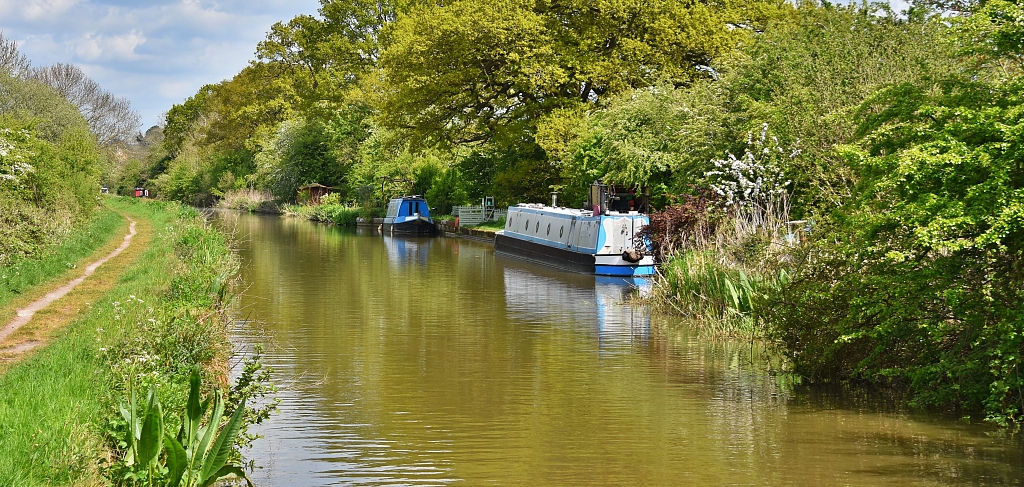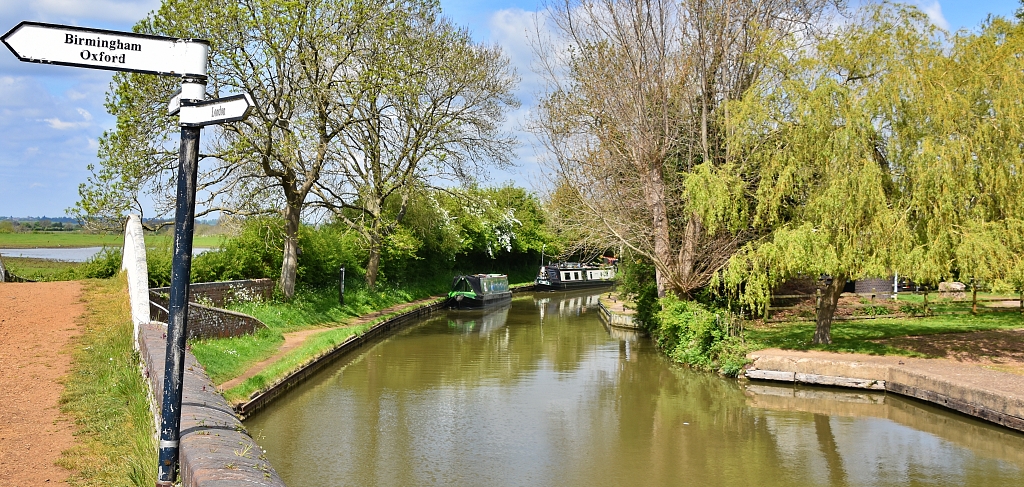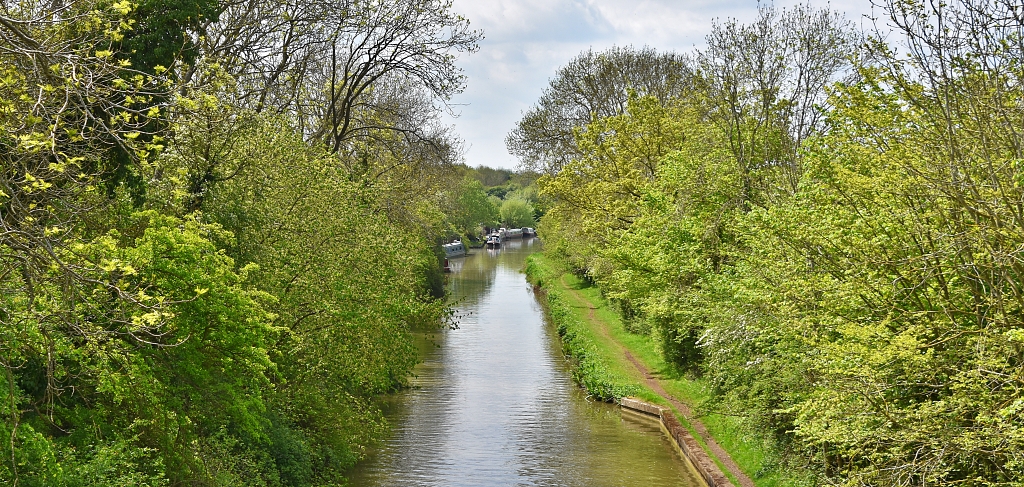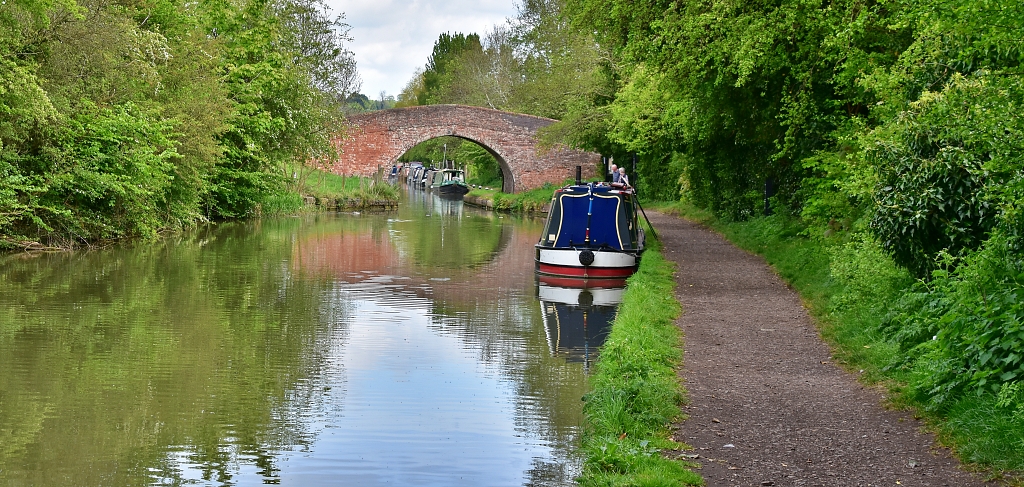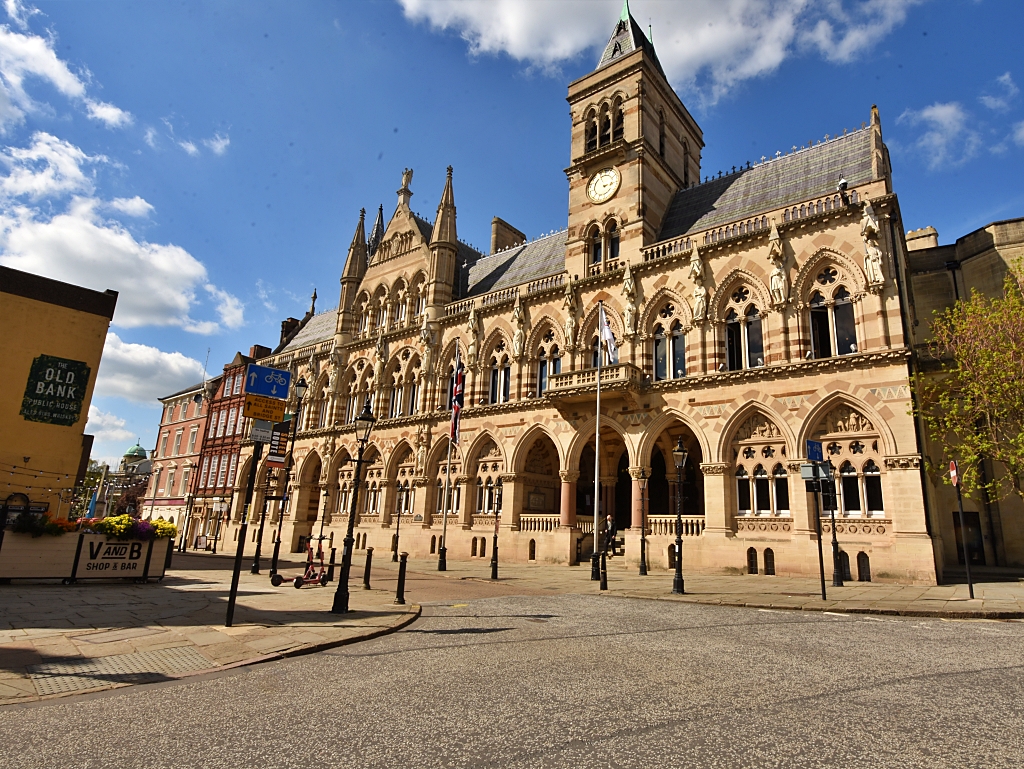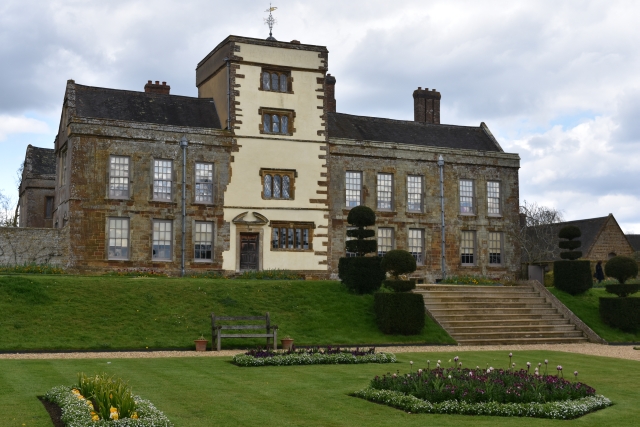Braunston
The
Heartbeat of England’s Canal Era
Whether you come by boat, car or stop off in Braunston during a walk, you’ll find a sleepily content village, drowsing beside the canal in the Northamptonshire countryside. A wide high street, welcoming pubs, neat cottages, and a range of useful shops - including a most wonderful butcher - invite visitors to stay. But even several visits later, we’ve yet to see it truly busy.
It’s a far cry from what I imagine Braunston to have been like during the 18th and 19th century, when this charming village played a pivotal role in the development of England’s canal network. And whether you love strolling along towpaths or love to peek into the past of England’s industrialisation, Braunston is the ideal place to start.
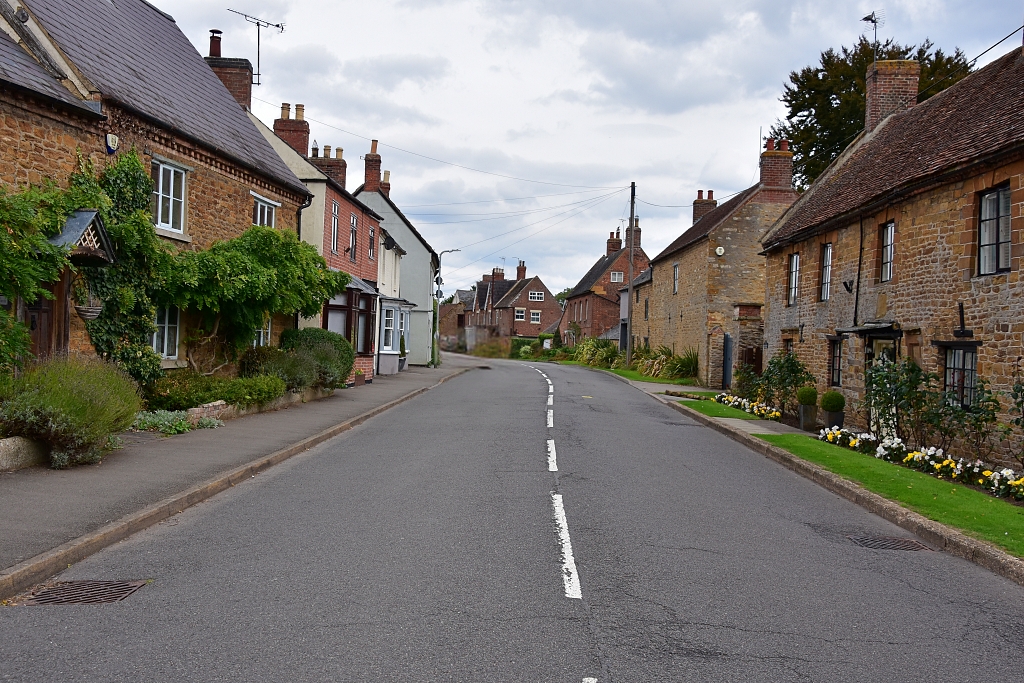 Braunston High Street © essentially-england.com
Braunston High Street © essentially-england.comBraunston existed long before the canals, of course, but during the late 18th and early 19th centuries, when canals became the primary means of transporting goods, Braunston grew and flourished thanks to its strategic location at the junction of the Oxford and Grand Union canals.
Even now, as you walk the towpath, you can see wharfs, boatyards, chandleries, and pumping stations. During the height of the canal era, many more of these would have lined the canal, along with warehouses, pubs, cookshops, and bunkhouses. And instead of a sleepy high street, both the towpaths and the village would have been busy with people, carts, and horses.
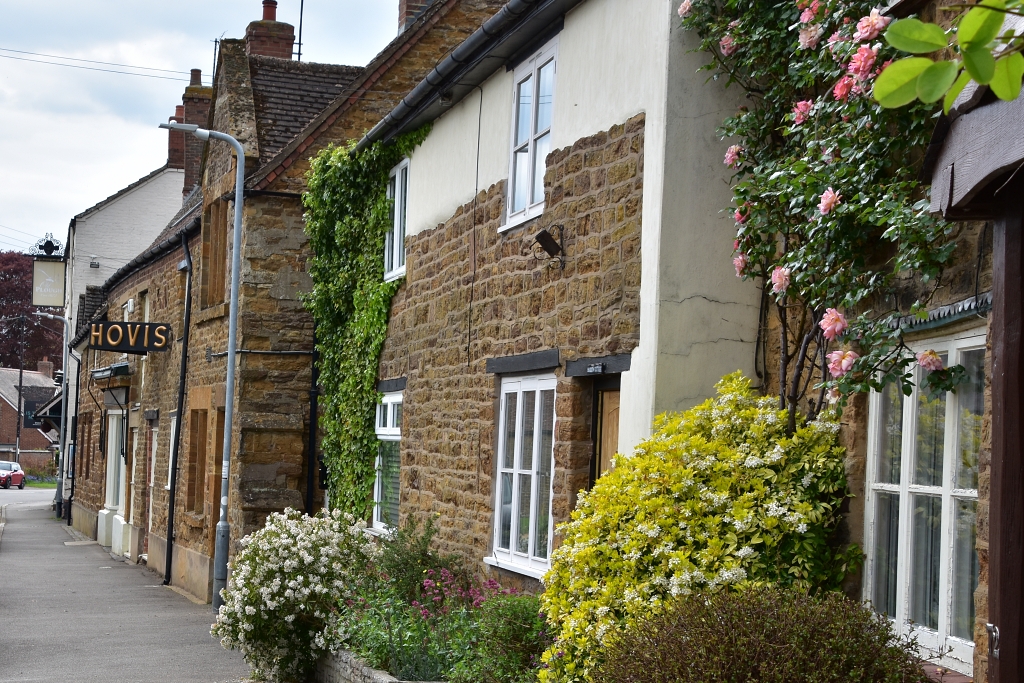 Braunston High Street © essentially-england.com
Braunston High Street © essentially-england.comWhen the canals came to England, Braunston’s location at a canal junction made it a crossroads for trade, and a centre of commerce.
The Grand Union Canal, which connects Birmingham and London, was as busy as the M1 motorway is today. Completed in the early 1800’s, it allowed for faster transport of products from the Midlands to the capital, connecting England’s industrial north and centre with its biggest market.
Coal, iron, pottery, and textiles passed through Braunston, as well as grain, vegetables, and even - if I read the information boards correctly - live pigs!
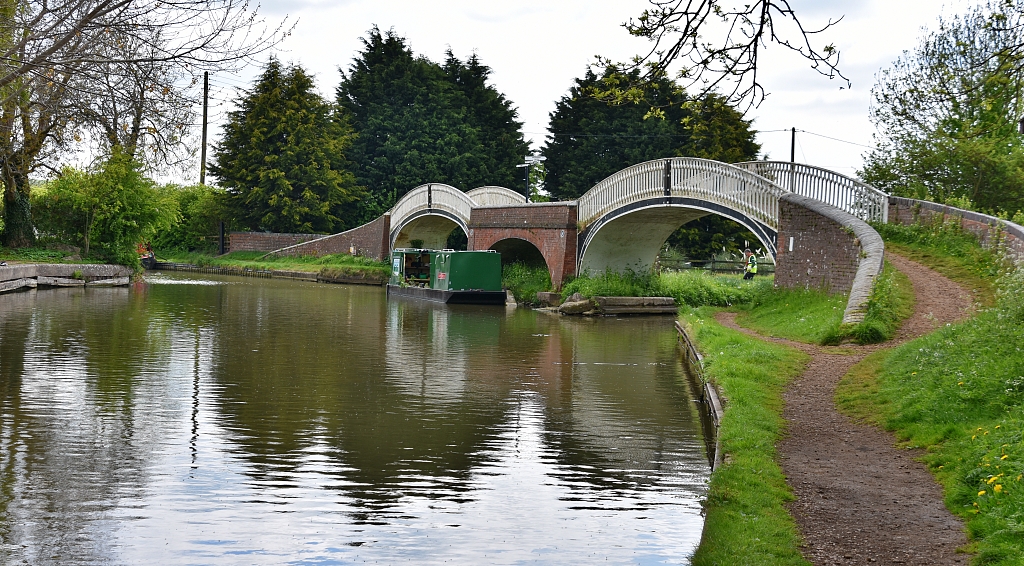 The Two Iron Bridges at the Junction Between the Oxford and Grand Union Canals © essentially-england.com
The Two Iron Bridges at the Junction Between the Oxford and Grand Union Canals © essentially-england.comBraunston’s location made it an essential stop for boats traversing the network, and all the services and trades necessary to maintain the canal and support the boats soon established themselves in the village, contributing to its growth and prosperity.
These days, a visit to Braunston doesn’t require shouting for service or shouldering your way through a crowed. Goods from the Midlands no longer use the canal to reach London. But the history of Braunston and the story of England’s canals remain for all to see.
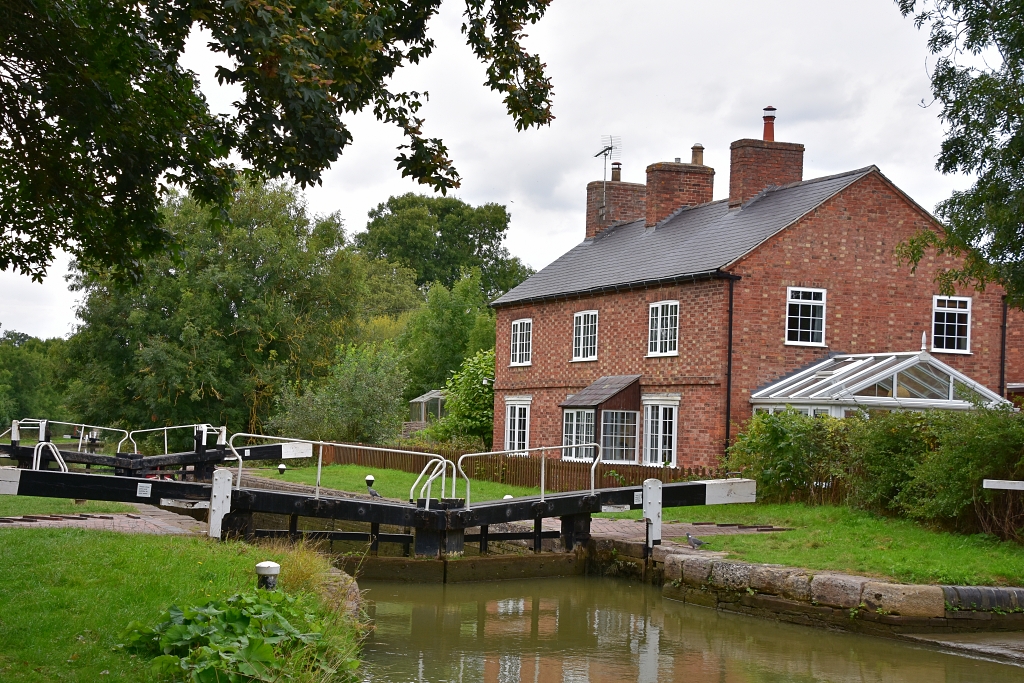 The Grand Union Canal in Braunston © essentially-england.com
The Grand Union Canal in Braunston © essentially-england.comThe Braunston Tunnel, completed in 1796, is one of the longest tunnels on the English canal network, stretching over 2,000 yards, while the cast-iron bridges spanning the waterways, and the flight of locks helping boats navigate the changes in water levels, are enduring symbols of the village’s rich industrial past.
And Braunston Marina, with its historic buildings and vibrant community of boaters, allows us a glimpse of what life in the village may have been like during its heyday.
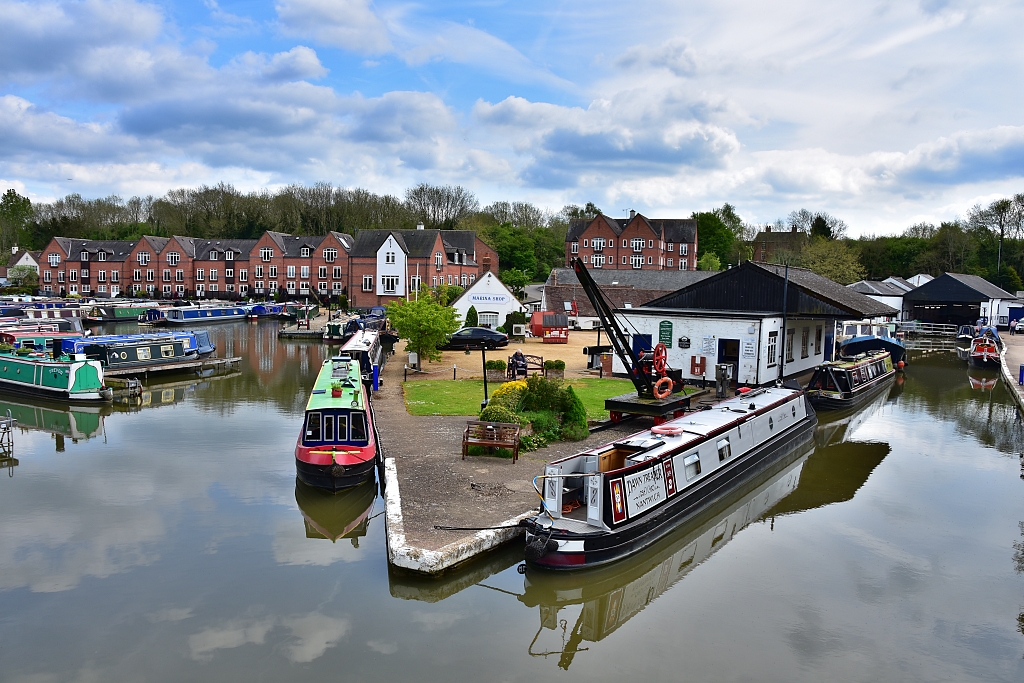 Braunston Marina © essentially-england.com
Braunston Marina © essentially-england.comBraunston - Canal Life
Because the canals didn’t just bring economic prosperity to Braunston and the surrounding area. They brought news, new ideas, and - most of all - different people, turning the village into a place where cultures and communities clashed and mixed.
I found the information boards along the canal fascinating to read. Life on the canals was hard, but it fostered a strong sense of camaraderie and mutual support among those who lived and worked on the water. And contact with the people living along the canal would have changed both the boating and village communities.
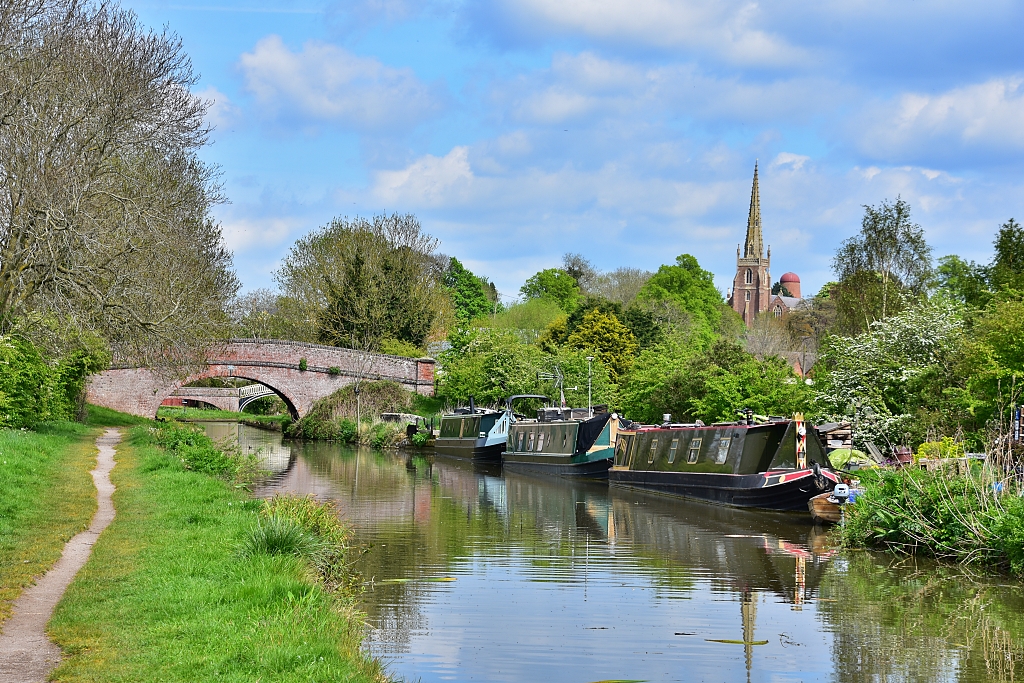 Braunston Church and Windmill from the Oxford Canal © essentially-england.com
Braunston Church and Windmill from the Oxford Canal © essentially-england.comEven two hundred years later, the canals are still close to Braunston’s heart. It’s on our to-do list to visit the annual Braunston Historic Narrowboat Rally to witness the parade of historic boats and to imagine life along the canal all those years ago.
The local museum, housed in a historic building near the marina, offers a fascinating insight into Braunston’s canal heritage, with exhibits showcasing tools, photographs, and artifacts from the era. Guided tours of the village and its waterways are also available if you’d love to find out more.
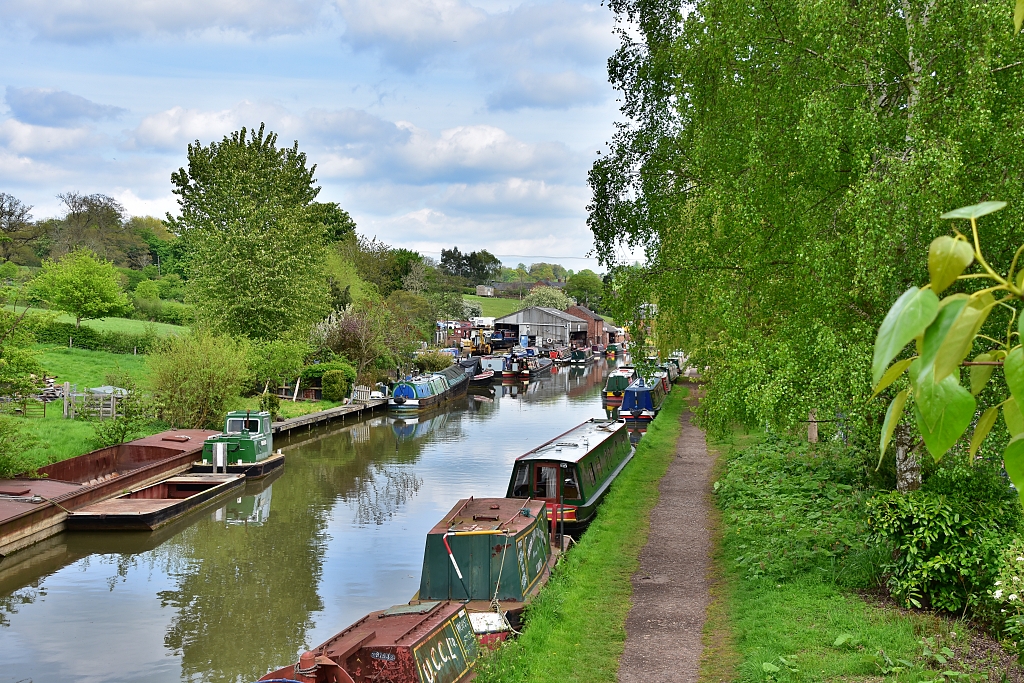 Industrial Area Along the Grand Union Canal © essentially-england.com
Industrial Area Along the Grand Union Canal © essentially-england.comWhat strikes me the most is that England’s canals, once the sign of industrialisation and ever speedier transport, are now a means for us to unwind and slow down. Whether it’s by walking along the towpath and soaking up peace and nature sounds, or by drifting along on a narrowboat without a shred of urgency.
Braunston, I’m happy to say, has catered for one and then adapted to the other and it feels as welcoming as it probably did to the boatmen and their families two hundred years ago. It’s a place to stop, rest, refuel, and look around.
And if the canals are calling you? You could always try a narrowboat holiday...
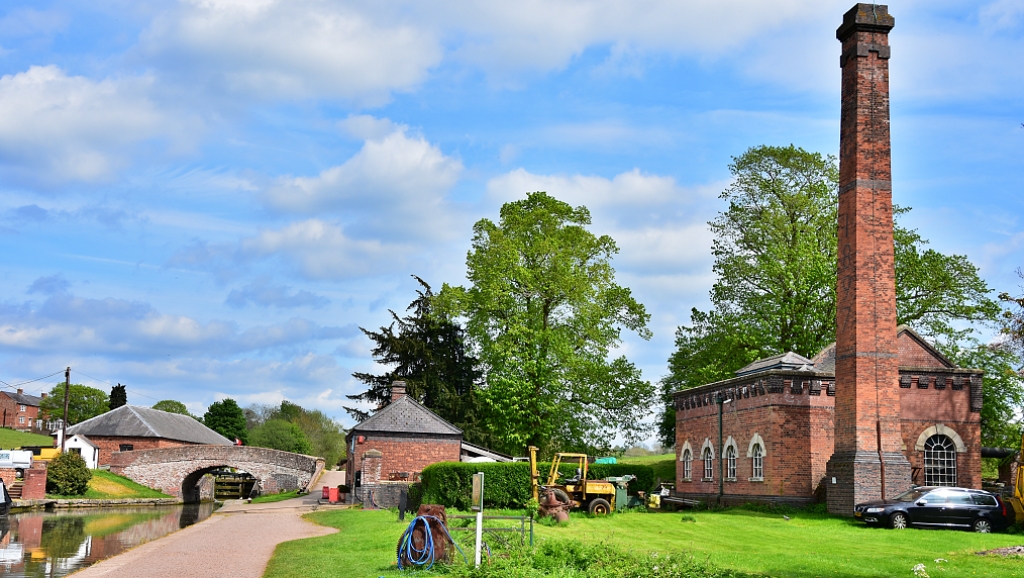 The Pump House next to Bottom Lock on our Braunston Canal Walk © essentially-england.com
The Pump House next to Bottom Lock on our Braunston Canal Walk © essentially-england.comFor more information about Braunston, the canal, and some walk ideas and maps, I used the Braunston village website.
We believe you'll enjoy Braunston and if you want to make a day out why not try one of our Braunston walks:
Braunston, Ashby St Ledger's, and Welton Circular Walk
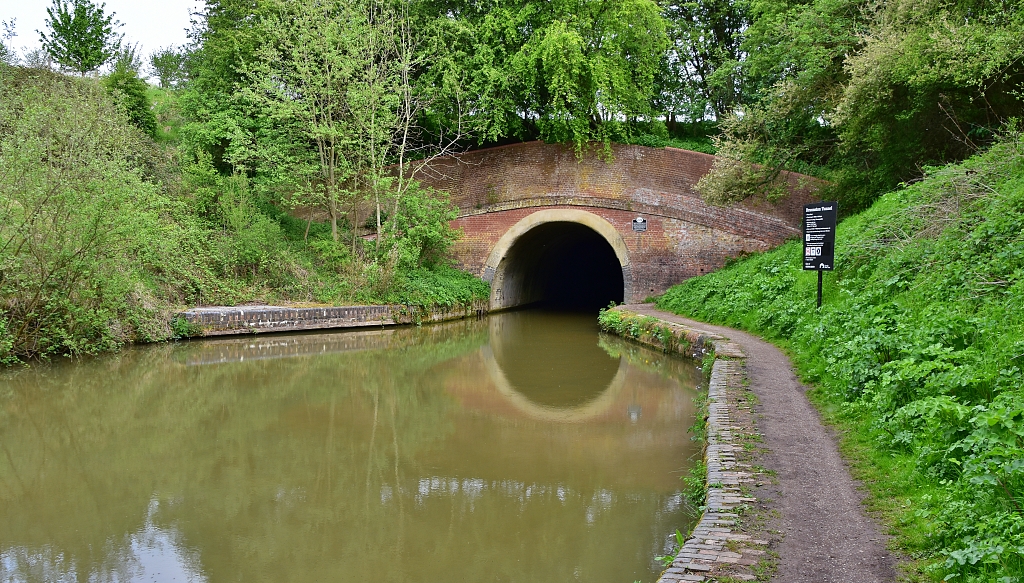 The Entrance to Braunston Tunnel © essentially-england.com
The Entrance to Braunston Tunnel © essentially-england.comFancy A Narrowboat Holiday Along A Canal?
Have our canal photos given you ideas about a narrowboat holiday or short break on the water?
The canal system in England and Wales is over two thousand miles long. There are plenty of different routes and circuits you could choose from, from cityscapes to quiet villages, or remote countryside. You can decide between an adventurous trip with locks and tunnels or a nice and easy float along a canal with no hassles. Below are some ideas...
Glyndwr
Cambridge
Sleeps 6
Narrow Escape
Tring
Sleeps 4
The Jubilee
Loghborough
Sleeps 4
We understand that not everyone wants to go racing off down the canals, but may still want to experience the canal boat lifestyle. So here are some narrowboats that are permanently moored.
